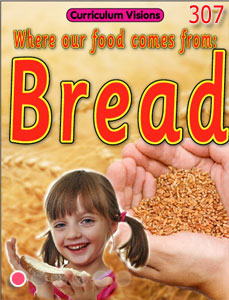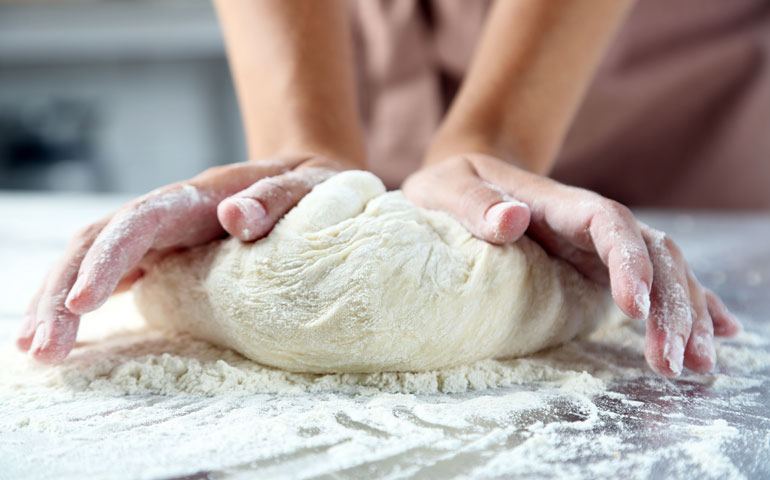Kneading is the pushing and pulling of dough to make it more stretchy and elastic. Kneading gives the ‘chewiness’ to dough products like bread and pasta.
Flour contains proteins, and when they are mixed with water, the proteins start to swell and hook into each other. The result are strands of gluten. To give the dough a texture which will make it hold firm, even when whirled to make a pizza base, the gluten has to be worked to give a net of evenly interlocked gluten. A pinch of salt sprinkled evenly over the dough is to allow the gluten strands to move easily across one another.
If you don’t knead dough with your hands (or mechanically with a dough hook) for long enough, the texture of the dough will not be stretchy enough.
The gluten net also holds the carbon dioxide bubbles that are made when yeast in leavened dough begins to form. This gives the bread its bubbly texture.
After kneading dough with yeast mixed in, the dough is allowed to rest, and then it is folded over or punched to beat out any large gas bubbles. If this last step is not done, you may find big holes in your bread after it has baked.







